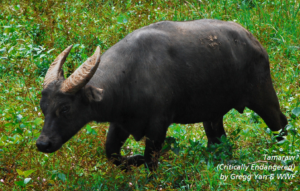Long ago, elephants, rhinoceros and giant tortoises roamed across the Cagayan Valley. Tigers once hunted prey in the jungled ridges of Palawan. As humans rose to dominate life on Earth, many species fell by the wayside. Gone are elephants, rhinoceros, and tigers from the Philippines.
Extinction? It’s a natural phenomenon. Most plant and animal species last around 10 million years before disappearing. A chosen few last much longer. Coelacanths―ancient six-foot long fish rediscovered in South Africa in 1938 and in Indonesia in 1997―are around 360 million years old.But today’s extinction rates are anything but natural. Over 200 species are now disappearing daily. By the time you finish reading this, another one will vanish.
The story of the passenger pigeon, once among the Earth’s most common birds, is ominous. A single flock flying above Southern Ontario in 1866 was 1.5 kilometers wide and 500 kilometers long. It would have filled the sky from Manila to Ilocos Norte with birds!
Just 48 years later, Martha, the world’s last passenger pigeon, was laid to rest. Due to excessive commercial hunting, one of the planet’s most common birds was declared extinct in 1914.
Endangered Animals of the Philippines
The Philippines hosts a mind-boggling menagerie of plant and animal life, many threatened with extinction. Among these are the tamaraw, Philippine eagle, golden crowned flying fox, hawksbill turtle, Irrawaddy dolphin, red-vented cockatoo, and other iconic species.Unchecked deforestation, coastal degradation, land conversion, pollution, climate change, and the introduction of foreign species are some of the major causes of biodiversity loss.
Fortunately, organizations like the World Wide Fund for Nature (WWF) stand at the forefront of conservation. The tale of the tamaraw, a critically-endangered species found only on the Philippine island of Mindoro, is encouraging.

An estimated 10,000 of the dwarf forest buffalo thrived in the early 1900s. The species was decimated by widespread logging, hunting, plus an outbreak of rinderpest contracted from imported cattle. In 1969, the tamaraw’s numbers dropped to less than 100 heads.
Today, due to strong conservation, enforcement, and education efforts between the Far Eastern University, the Tamaraw Conservation Programme, WWF, and local communities, the population has recovered to 382: the highest recorded since the year 2000. The initiative is called ‘Tams-2’ and aims to double the tamaraw population from 300 to 600 by 2020. Prospects are looking good.
How You Can Help
So what’s the best way to conserve other endangered Philippine species? Knowledge is paramount; when you know which animal (and plant) species are legally protected, you can educate your peers while reporting illegal sales of endangered animals or animal parts in markets or on the Internet.
 Steer clear of endangered animal products; go for sustainable alternatives. Resin starfish, rubber coral replicas, and plastic turtle shells look like the real thing. They are easier on one’s wallet and conscience.
Steer clear of endangered animal products; go for sustainable alternatives. Resin starfish, rubber coral replicas, and plastic turtle shells look like the real thing. They are easier on one’s wallet and conscience.
Support sustainably-sourced products like FSC (Forest Stewardship Council) wood. Don’t throw trash―especially plastic bags―in canals, rivers or the sea, where they can be mistaken by sea turtles, whales and dolphins for food…with deadly consequences.
Lastly, you can also support the various organizations working to ensure that what happened to the passenger pigeon won’t happen to the Philippines’ endangered treasures. WWF, Haribon, Conservation International, Greenpeace, and a host of committed groups all need your help. Together, we can turn the tide of extinction.

This first appeared in Animal Scene’s May 2015 issue.






